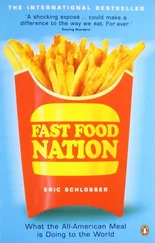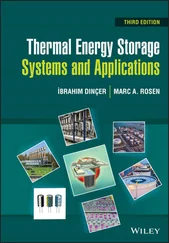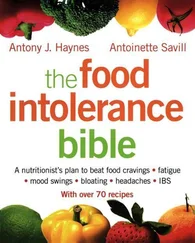25. S. K. Wimalaratne and M. M. Farid, “Pressure assisted thermal sterilization,” Food Bioprod. Process. , vol. 86, no. 4, 2008, doi: 10.1016/j.fbp.2007.08.001.
26. P. Loypimai, A. Moongngarm, P. Chottanom, and T. Moontree, “Ohmic heating-assisted extraction of anthocyanins from black rice bran to prepare a natural food colourant,” Innov. Food Sci. Emerg. Technol. , vol. 27, 2015, doi: 10.1016/j.ifset.2014.12.009.
27. G. Lehrke, L. Hernaez, S. L. Mugliaroli, M. von Staszewski, and R. J. Jagus, “Sensitization of Listeria innocua to inorganic and organic acids by natural antimicrobials,” LWT - Food Sci. Technol. , vol. 44, no. 4, 2011, doi: 10.1016/j. lwt.2010.09.016.
28. Z. Xu et al. , “Inactivation effects of non-thermal atmospheric-pressure helium plasma jet on staphylococcus aureus biofilms,” Plasma Process. Polym. , vol. 12, no. 8, 2015, doi: 10.1002/ppap.201500006.
29. J. Zhu et al. , “Combined effect of ultrasound, heat, and pressure on Escherichia coli O157:H7, polyphenol oxidase activity, and anthocyanins in blueberry (Vaccinium corymbosum) juice,” Ultrason. Sonochem. , vol. 37, pp. 251–259, 2017, doi: 10.1016/j.ultsonch.2017.01.017.
30. D. Ziuzina, S. Patil, P. J. Cullen, K. M. Keener, and P. Bourke, “Atmospheric cold plasma inactivation of Escherichia coli, Salmonella enterica serovar Typhimurium and Listeria monocytogenes inoculated on fresh produce,” Food Microbiol. , vol. 42, pp. 109–116, 2014, doi: 10.1016/j.fm.2014.02.007.
31. V. D. Farkade, S. Harrison, and A. B. Pandit, “Heat induced translocation of proteins and enzymes within the cell: An effective way to optimize the microbial cell disruption process,” Biochem. Eng. J. , vol. 23, no. 3, 2005, doi: 10.1016/j.bej.2005.01.001.
32. A. J. Brodowska, A. Nowak, and K. Śmigielski, “Ozone in the food industry: Principles of ozone treatment, mechanisms of action, and applications: An overview,” Crit. Rev. Food Sci. Nutr. , vol. 58, no. 13, 2018, doi: 10.1080/10408398.2017.1308313.
33. M. Salma, S. Rousseaux, A. Sequeira-Le Grand, B. Divol, and H. Alexandre, “Characterization of the Viable but Nonculturable (VBNC) State in Saccharomyces cerevisiae .,” PLoS One , vol. 8, no. 10, 2013, doi: 10.1371/jour nal. pone.0077600.
34. I. Albertos et al. , “Effects of dielectric barrier discharge (DBD) generated plasma on microbial reduction and quality parameters of fresh mackerel ( Scomber scombrus ) fillets,” Innov. Food Sci. Emerg. Technol. , vol. 44, 2017, doi: 10.1016/j.ifset.2017.07.006.
35. H. Daryaei, A. E. Yousef, and V. M. Balasubramaniam, “Microbiological aspects of high-pressure processing of food: inactivation of microbial vegetative cells and spores,” in Food Engineering Series , 2016.
36. J. Raso, I. Alvarez, S. Condón, and F. J. Sala Trepat, “Predicting inactivation of Salmonella senftenberg by pulsed electric fields,” Innov. Food Sci. Emerg. Technol. , vol. 1, no. 1, 2000, doi: 10.1016/S1466-8564(99)00005-3.
37. A. Ait-Ouazzou, P. Mañas, S. Condón, R. Pagán, and D. García-Gonzalo, “Role of general stress-response alternative sigma factors σ S (RpoS) and σ B (SigB) in bacterial heat resistance as a function of treatment medium pH,” Int. J. Food Microbiol. , vol. 153, no. 3, pp. 358–364, 2012, doi: 10.1016/j. ijfoodmicro.2011.11.027.
38. M. D. Esteban, A. Aznar, P. S. Fernández, and A. Palop, “Combined effect of nisin, carvacrol and a previous thermal treatment on the growth of Salmonella enteritidis and Salmonella senftenberg ,” Food Sci. Technol. Int. , vol. 19, no. 4, 2013, doi: 10.1177/1082013212455185.
39. C. Hill, P. D. Cotter, R. D. Sleator, and C. G. M. Gahan, “Bacterial stress response in Listeria monocytogenes : Jumping the hurdles imposed by minimal processing,” in International Dairy Journal , 2002, vol. 12, no. 2–3, doi: 10.1016/S0958-6946(01)00125-X.
40. T. Abee and J. A. Wouters, “Microbial stress response in minimal processing,” Int. J. Food Microbiol. , vol. 50, no. 1–2, 1999, doi: 10.1016/ S0168-1605(99)00078-1.
41. G. Cebrián, P. Mañas, and S. Condón, “Comparative resistance of bacterial foodborne pathogens to non-thermal technologies for food preservation,” Frontiers in Microbiology , vol. 7, no. MAY. 2016, doi: 10.3389/ fmicb.2016.00734.
42. A. Chen et al ., “Plasma membrane behavior, oxidative damage, and defense mechanism in Phanerochaete chrysosporium under cadmium stress,” Process Biochem. , vol. 49, no. 4, 2014, doi: 10.1016/j.procbio.2014.01.014.
43. J. Dai, A. Gupte, L. Gates, and R. J. Mumper, “A comprehensive study of anthocyanin-containing extracts from selected blackberry cultivars: Extraction methods, stability, anticancer properties and mechanisms,” Food Chem. Toxicol. , vol. 47, no. 4, 2009, doi: 10.1016/j.fct.2009.01.016.
44. S. Gao, G. D. Lewis, M. Ashokkumar, and Y. Hemar, “Inactivation of microorganisms by low-frequency high-power ultrasound: 1. Effect of growth phase and capsule properties of the bacteria,” Ultrason. Sonochem. , vol. 21, no. 1, 2014, doi: 10.1016/j.ultsonch.2013.06.006.
45. L. Han, S. Patil, D. Boehm, V. Milosavljević, P. J. Cullen, and P. Bourke, “Mechanisms of inactivation by high-voltage atmospheric cold plasma differ for Escherichia coli and Staphylococcus aureus, ” Appl. Environ. Microbiol. , vol. 82, no. 2, 2016, doi: 10.1128/AEM.02660-15.
46. A. A. Gabriel, “Inactivation behaviors of foodborne microorganisms in multi-frequency power ultrasound-treated orange juice,” Food Control , vol. 46, 2014, doi: 10.1016/j.foodcont.2014.05.012.
47. V. Trivittayasil, F. Tanaka, and T. Uchino, “Investigation of deactivation of mold conidia by infrared heating in a model-based approach,” J. Food Eng. , vol. 104, no. 4, 2011, doi: 10.1016/j.jfoodeng.2011.01.018.
48. E. Eser and H. Ibrahim Ekiz, “Effect of far infrared pre-processing on microbiological, physical and chemical properties of peanuts,” Carpathian J. Food Sci. Technol. , vol. 10, no. 1, 2018.
49. S. Wilson, “Development of Infrared Heating Technology for Corn Drying and Decontamination to Maintain Quality and Prevent Mycotoxins,” Theses Diss. , 2016, [Online]. Available: https://scholarworks.uark.edu/etd/1542.
50. R. Abdul-Kadir, T. J. Bargman, and J. H. Rupnow, “Effect of Infrared Heat Processing on Rehydration Rate and Cooking of Phaseolus vulgaris (Var. Pinto),” J. Food Sci. , vol. 55, no. 5, 1990, doi: 10.1111/j.1365-2621.1990.tb03964.x.
51. N. Staack, L. Ahrné, E. Borch, and D. Knorr, “Effect of infrared heating on quality and microbial decontamination in paprika powder,” J. Food Eng. , vol. 86, no. 1, 2008, doi: 10.1016/j.jfoodeng.2007.09.004.
52. L. Eliasson, P. Libander, M. Lövenklev, S. Isaksson, and L. Ahrné, “Infrared Decontamination of Oregano: Effects on Bacillus cereus Spores, Water Activity, Color, and Volatile Compounds,” J. Food Sci. , vol. 79, no. 12, 2014, doi: 10.1111/1750-3841.12694.
53. J. W. Ha and D. H. Kang, “Enhanced inactivation of food-borne pathogens in ready-to-eat sliced ham by near-infrared heating combined with UV-C irradiation and mechanism of the synergistic bactericidal action,” Appl. Environ. Microbiol. , vol. 81, no. 1, 2015, doi: 10.1128/AEM.01862-14.
54. S. Jun and J. Irudayaraj, “A Dynamic Fungal Inactivation Approach Using Selective Infrared Heating,” Trans. Am. Soc. Agric. Eng. , vol. 46, no. 5, 2003, doi: 10.13031/2013.15435.
Читать дальше












